A Recipe for Legacy: Irene Flowers’ Lasting Impact on Tablertown
A Recipe for Legacy: Irene Flowers’ Lasting Impact on Tablertown
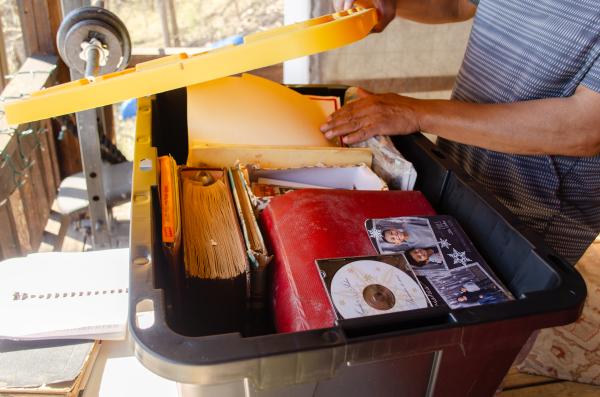
Blaise Reader, Introduction
During our surveys of Tablertown and its residents, the name Irene Flowers never ceased repetition. Note was taken during the design stage of our project, but we did not land on researching the life and impacts of Irene until a brainstorming session set us toward an examination of Tablertown’s foodways. David Butcher then informed us of a collection of recipes and writings from Irene that he had acquired after saving them from her old residence. Thus, our project was born.
It was apparent through research prior to our trip to Tablertown, as well as in our conversations with David, that Irene was a monumental figure not only to her family but to the entire . This impact and legacy cannot be overstated, though, as more traces of her legacy were continually uncovered through each artifact scan and second of our interviews. It then became our goal through our research project with David Butcher and the Tablertown People of Color Museum to amplify and preserve the voices of this legacy.
Elisabeth Burns, Encountering Collection
After talking about the recipes that David had found on Irene’s property - which he had acquired to build the new Tablertown People of Color Museum on after her passing - Blaise and I began to sort through the boxes that had been recovered from her house in search of these recipes. Throughout our search, we found several notable items including probably hundreds of photos, some of her writings, and old newspapers. But eventually we stumbled upon what we had been looking for - an old plastic box that was missing its lid with over a hundred recipes in it.
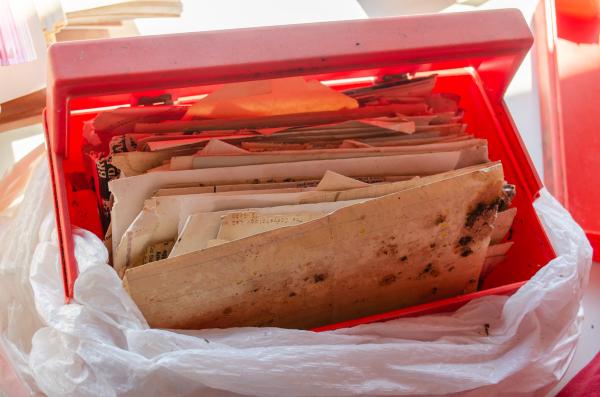
Many of these recipes had been damaged and as we began to go through the box Blaise and I had naturally split into two different roles. I had the chance to sort through the recipes and clean them off before handing them to Blaise to sort into folders. The recipes were fragile and needed to be handled with care. That’s one of the reasons being the one to clean them off and interact with them first was so special. Another reason was because I got to read at least the title of every recipe once even before we started our archiving, and as I continued to encounter these recipes through scanning and detailing in the archive, I created a relationship with them.
While cleaning the recipes, I had my eye out for recipes for foods that Irene was known for; mainly her annual apple butter recipe but would have been happy to find her recipe for fried chicken or bread. But after not being able to find the apple butter or the fried chicken recipes, I reflected on when we write recipes down and when we don’t. Thinking about how cooking (especially when cooking something familiar) can be intuitive, I began to connect more with Irene. I felt like I got to know her from the recipes she’d clipped from the back of grocery store items or newspapers and deemed worthy of her collection and I felt like I had gotten to know her from all the recipes she’d written down and kept. Through encountering these recipes, people can encounter Irene, and Blaise and I were lucky enough to do so.

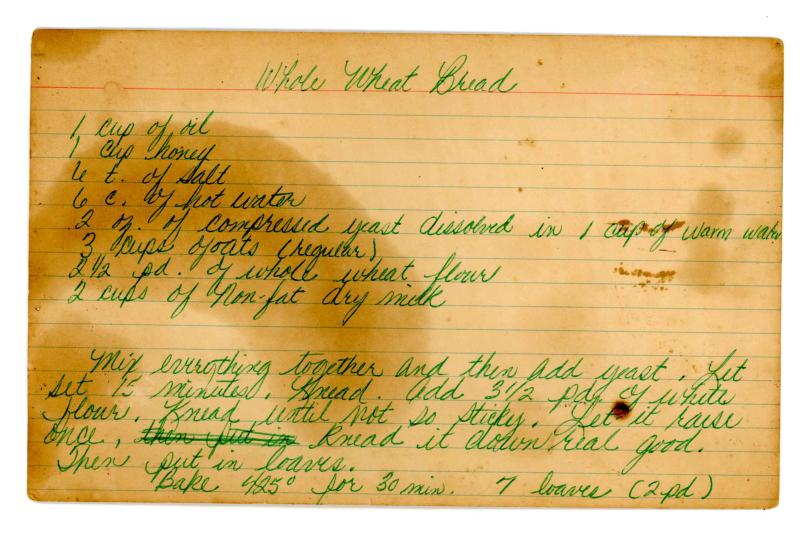
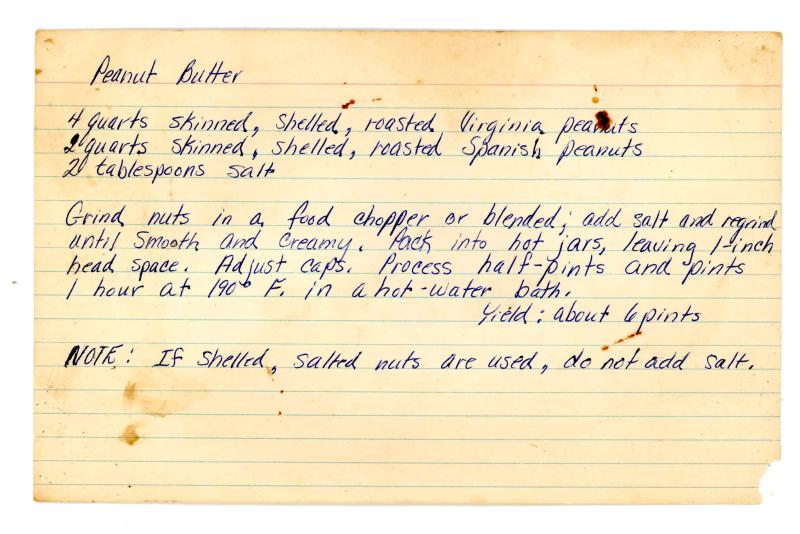
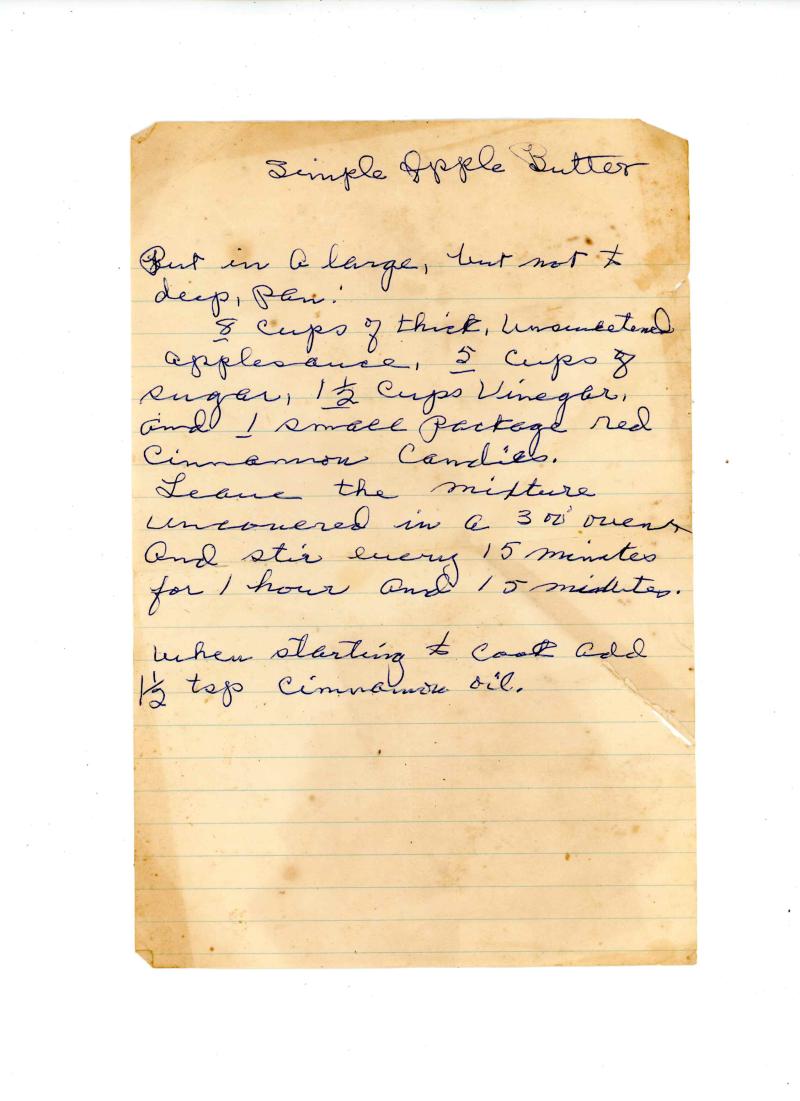
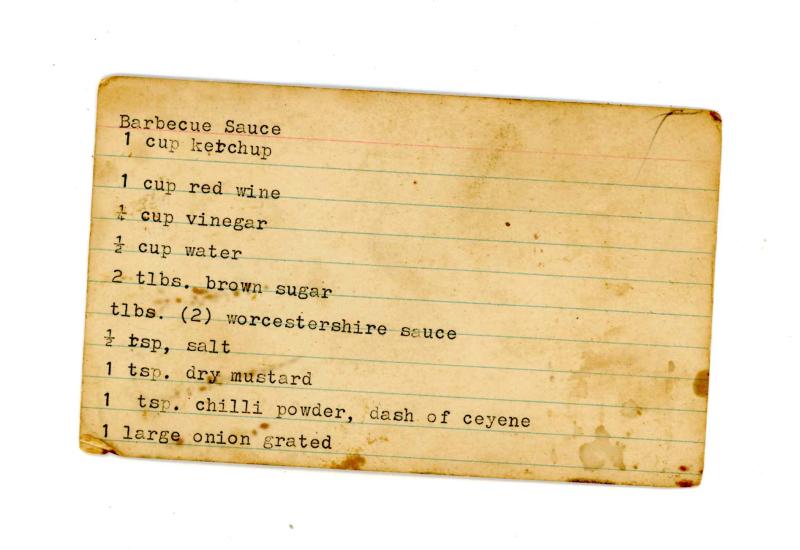
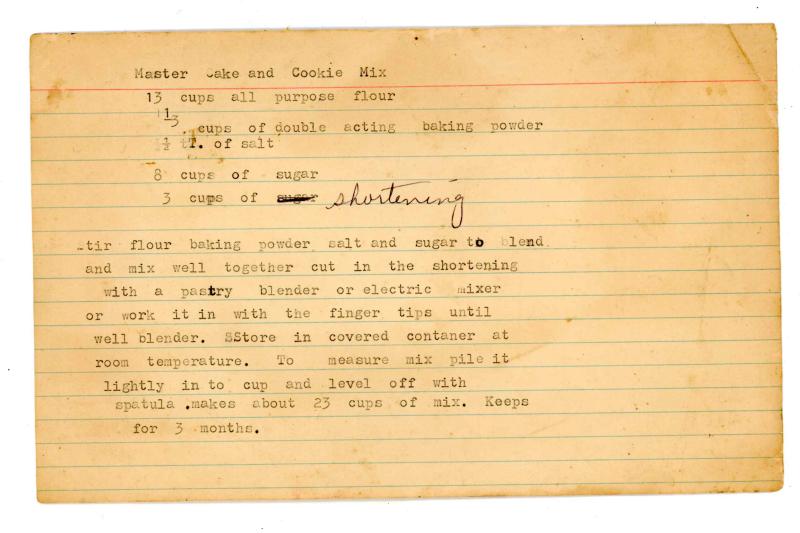
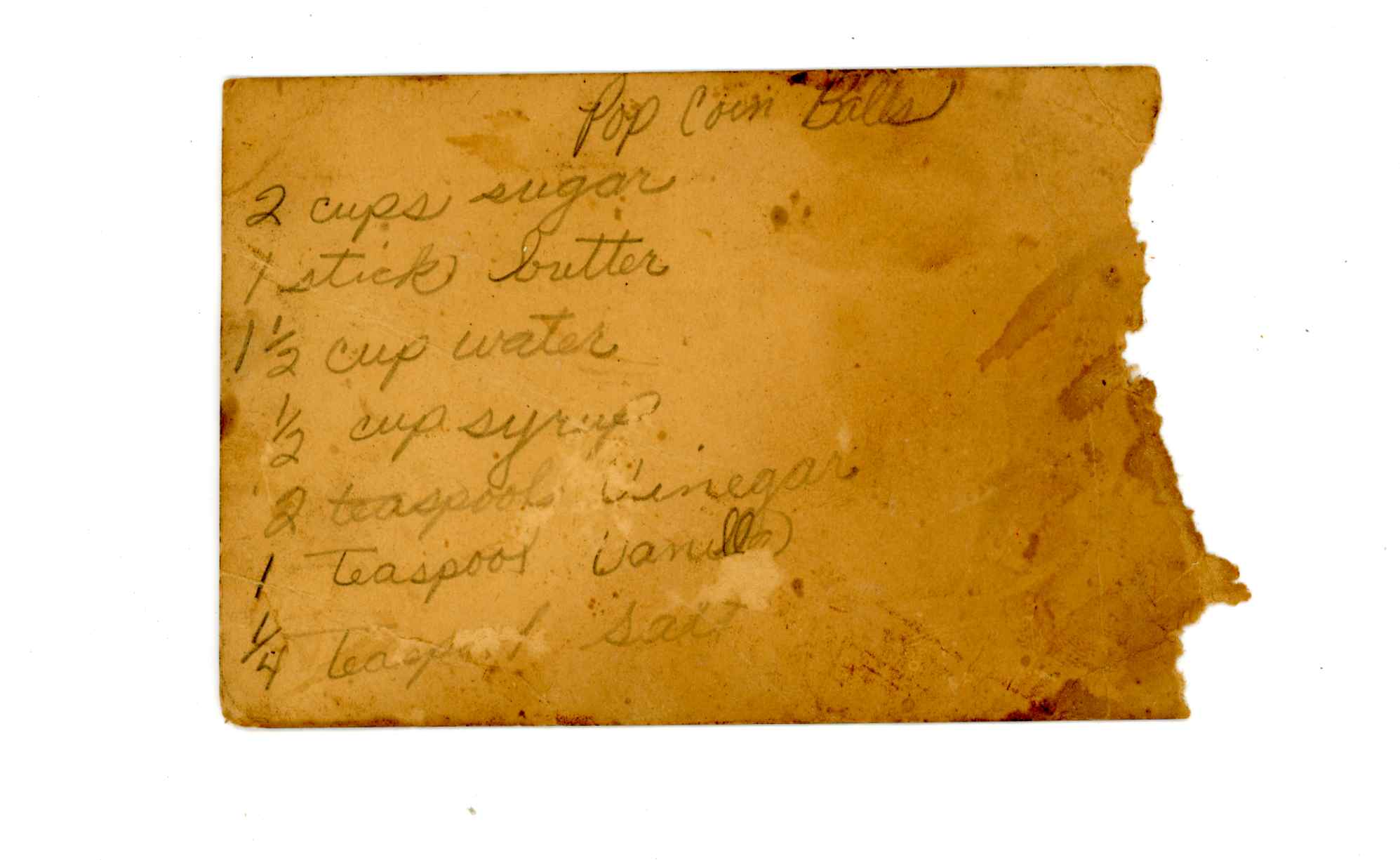
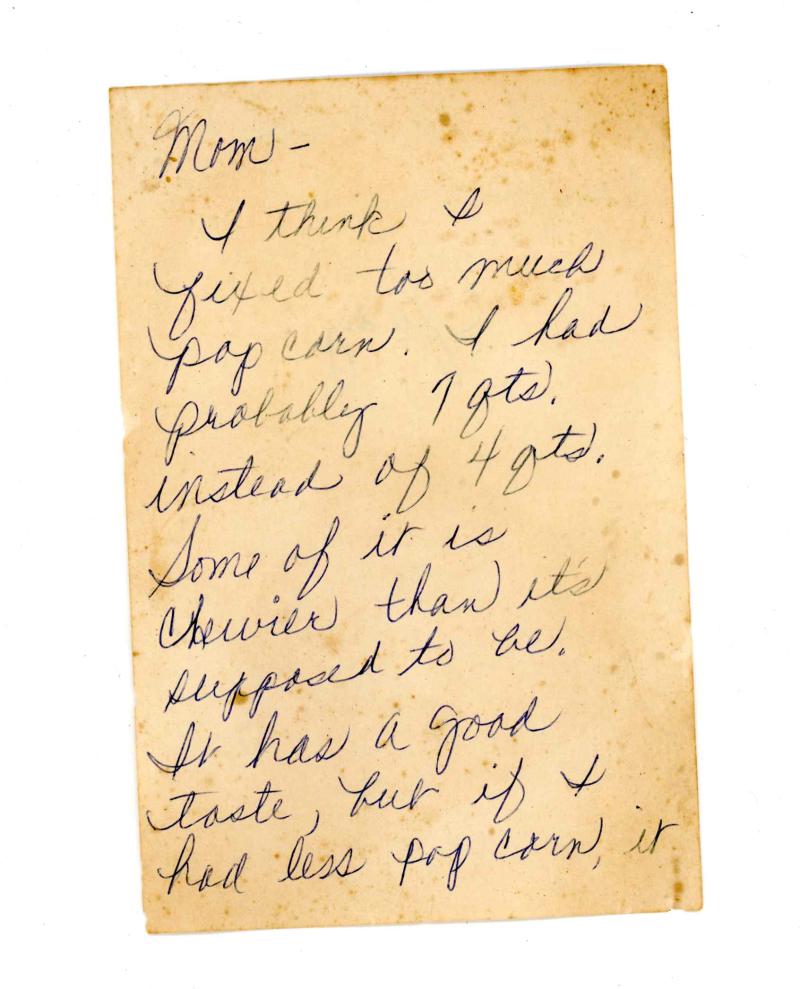
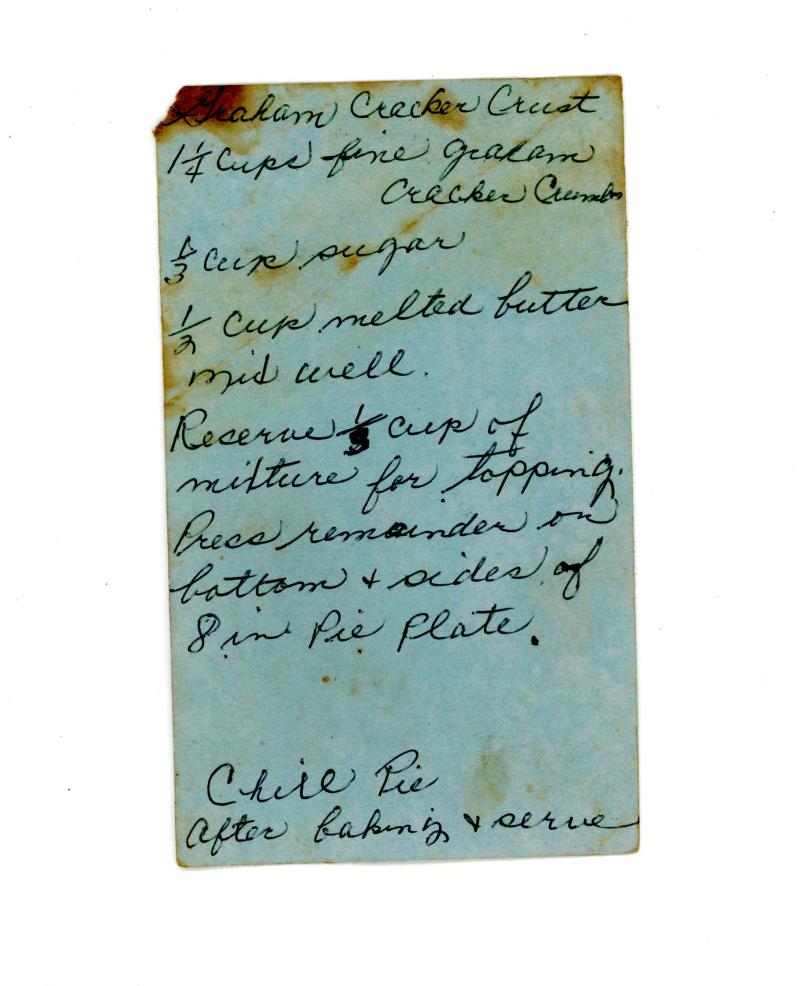
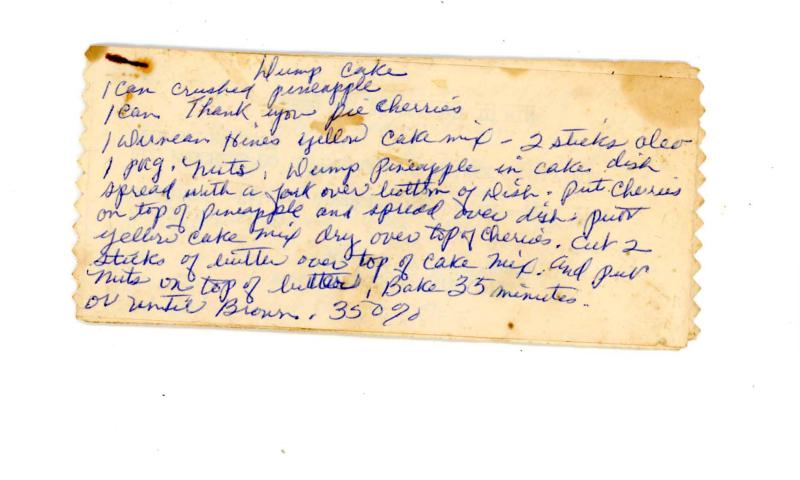
Blaise Reader, Judy and Gail’s Picture of Irene and Tablertown
By connection of David, we were lucky enough to speak with Judy Tabler and her husband Gail about Irene and the community around them growing up and living in the area. Judy and Gail provided not only an invaluable vision of Irene and her legacy in our hour and twenty-minute interview, but also captivating personal narratives that speak to her impact and presence in Tablertown. The enduring figure of Irene Flowers continued to be fully relayed to us and exceeded previous bounds in our minds through these narratives and testimonies.
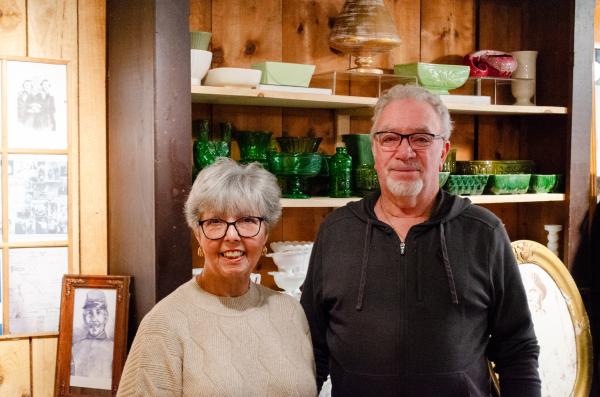
The storytelling began before turning the recorder on, with Judy, Gail, and David starting to discuss Irene immediately. We rushed to hit record in fear of losing a single detail of her and the interview thus went underway, as the three discussed her private prominence as a writer. Though distinguished now as a writer in the community, and in Dessie Workman’s words, a profound one, this was only a small facet of her legacy. From interviewing Judy and Gail, we learned that her impact had no boundaries, with her remembered for many roles outside of being an author. Whether it was her role as a caretaker, her cooking, her knowledge of the land, her sharp wit, her community involvement, or her relationship with her grandchildren, it is safe to say that Irene left her mark on Tablertown and those who live/have lived there.
Elisabeth Burns, Interview with Sandy
My interview with Sandy Tabler-Smith was an amazing insight into what Tablertown had been like in the past. Although she didn’t ever cook with Irene and didn’t have too much to talk about that was directly related to her recipes, Sandy was a fountain of knowledge when it came to how the community used to function. As the daughter of the man who founded the Kilvert Community Center with Irene, Sandy was able to tell us about the different programs that it used to hold, and she expanded on the role the church had in the community by talking about the old Christmas program. She was also able to talk about her childhood in the area and how things have changed since then, with a big focus on how kids live today versus how she lived in the past.
“Yeah. Because it is part of - it's part of my life. I mean, you know, because I was there, you know, at the beginning and all the programs and all the people and you know, and everything, so, I know, I know the older ones, if there's anyone older than me left but they still I mean, you know, they still talk about it. And even people that's my age and younger that went to programs. I mean, that's their highlight. I mean, that's all they talk about, is that church in the things that we, you know, we did.” - Sandy Tabler-Smith about the Church and its importance for those in the community.
During her interview, she painted a picture of Tablertown that was busy in a way that I had not seen during my limited time there. She talked about kids running around and playing baseball and through her description I saw a new side of Tablertown. It also made the fact that the church is no longer active all the sadder as she talks about how important it was and how, now in the present, she worries about it being destroyed if it were to become abandoned. If Irene’s recipes allowed me and Blaise to encounter her and the legacy she created through food and community involvement, then Sandy’s interview is a way for those listening to encounter Tablertown as it had been when she was young and see the town for what it had been in addition to what it is now.
[David Butcher] I think it'd be safe to say in her forty-two years of it, she impacted tens of thousands of people. Generations of people.
[Judy Tabler] Yeah. On Facebook . . . I think Brittany put on there, "I miss Grandma" and stuff, and all these girls would come on and say, "She taught me how to sew, how to--" I mean . . .
